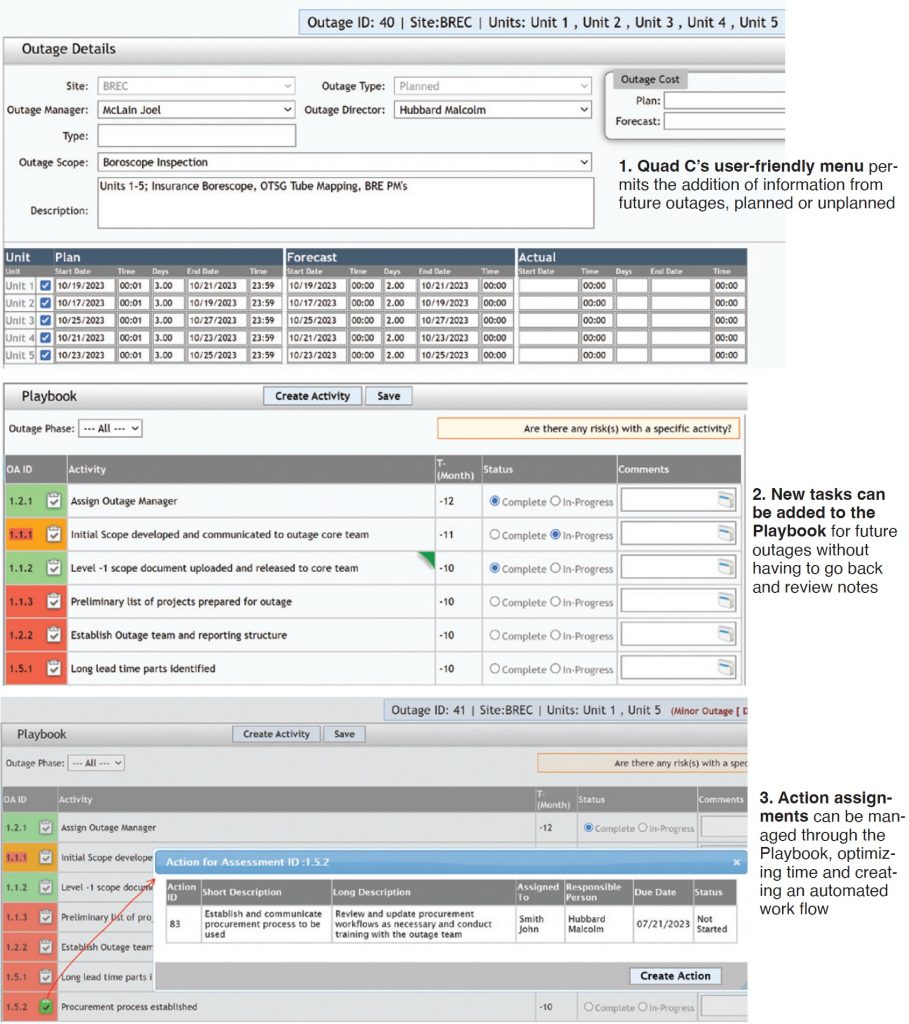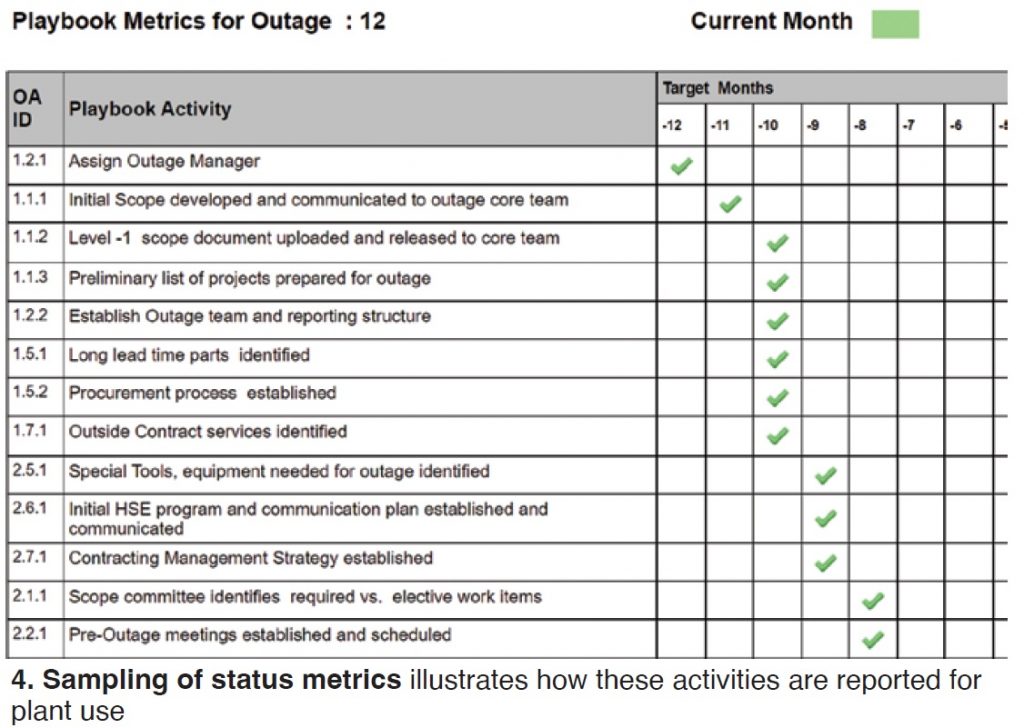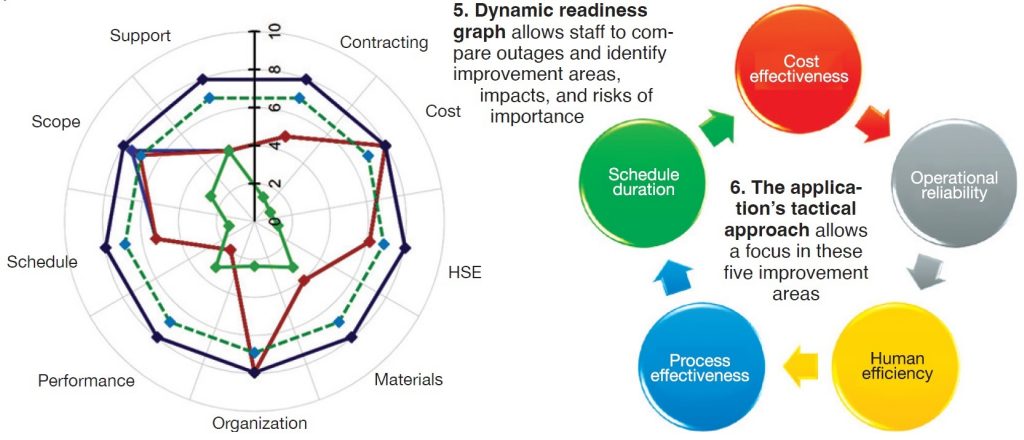
Broad River Energy Center
Owned and operated by Onward Energy
865 MW, dual-fuel facility in Gaffney, SC, with five 7FA.03 simple-cycle units, each equipped with an IST once-through steam generator
Plant manager: Malcolm Hubbard
Background. Having five GT/HRSG trains, each consisting of a 7FA.03 and a once-through steam generator, managing outages at Broad River Energy Center can be challenging, depending on work scope, available time, available contract support, and other factors. Outages are among the top three or four expense entries on the plant’s balance sheet, thereby demanding attention to detail and taxing the efforts of plant personnel to optimize and organize tasks.
Past outages often fell victim to schedule and cost overruns. Quality of workmanship was another concern given the amount of rework often required and availability impacts caused by contractor quality oversight.
The current staff has been challenged by ownership to reduce outage cost and duration, and improve quality control, compared to past practices with different owners and operators.
Challenge. A new manager was hired for Broad River with outage planning a high priority and goals of reducing outage expenses, increasing reliability, and improving customer relations. These strategic objectives were a focus with quality improvements being a dependency of each.
While outage philosophies are similar across the industry, the mechanics of how to prepare and optimize is highly dependent on staffing levels, knowledge and experience of personnel, and tools used to make the tasks and work packages more manageable.
Solution. Broad River deployed Quad C®, a software tool to assist in outage planning, believing it would help improve coordination, enable earlier discovery of challenges, promote better communications with vendor and owners, and build a foundation for optimal outage oversight. One of the key objectives was to create a continuous-improvement plan that would efficiently allow the facility to mature the planning and execution process over time.
Plan goals included the following:
- Consistency across the entire team.
- Standard reporting.
- Easy to use.
- Better oversight of risks and lessons.
- Reduce outage cost.
- Shorten outage duration.
- Provide a single location for outage files.
- Improve accountability and engagement.
Quad C provides a simple and user-friendly menu of modules that allow the addition of future outages, planned or unplanned, for ease of tracking fleetwide (Fig 1). The cornerstone module is the “Playbook” which is easy to follow, provides quick status indicators, and manages key tasks. New tasks can be added to the Playbook easily to help plan upcoming outages, without having to go back and review notes (Fig 2).
Action assignments can be managed through the Playbook, optimizing time, effectiveness, and creating an automated workflow (Fig 3).

Numerous status reports and indicators are available to assess and communicate with others, improving planning support needs. A planning indicator shows status compared to the target, based on the phase and timing. The sample of status metrics in Fig 4 illustrates a simple status report of Playbook activities (Fig 4).

As one matures with planning, a dynamic readiness graph allows staff to compare outages and easily identify improvement areas, impacts, and risks that best support an owner’s strategy of continuous improvement, cost reductions, and quality elements for the plant (Fig 5).
The application’s tactical approach has allowed for a focus in the five key areas of improvement highlighted in Fig 6.

Results:
- Durations of outages have been reduced by about 11% when comparing similar schedule scope items.
- Savings have been recorded from about $115k to more than $400k, depending on comparative data.
- A positive annual reliability impact exceeding $275k.
- A reduction of outage-related work orders resulting from quality issues and reduced trips/forced outages because of outage quality concerns.
End notes. Takeaways from Broad River’s experience in outage planning include the following:
- Use a tool that allows the outage team to communicate easily and track progress—one that isn’t overly complicated and/or burdensome for a small staff.
- Do not reduce scope items to meet a deadline and call the outage “successful.”
- Collect data from the software that helps manage future outages better with the use of lessons learned, opportunities, and collaboration.
- Openly communicate to the owners and key contractors through a process that improves support, coordination, and results.
Project participants:
Malcolm Hubbard, plant manager
Joel McLain
Kevin Whitney
Broad River’s 2023 Best Practices









